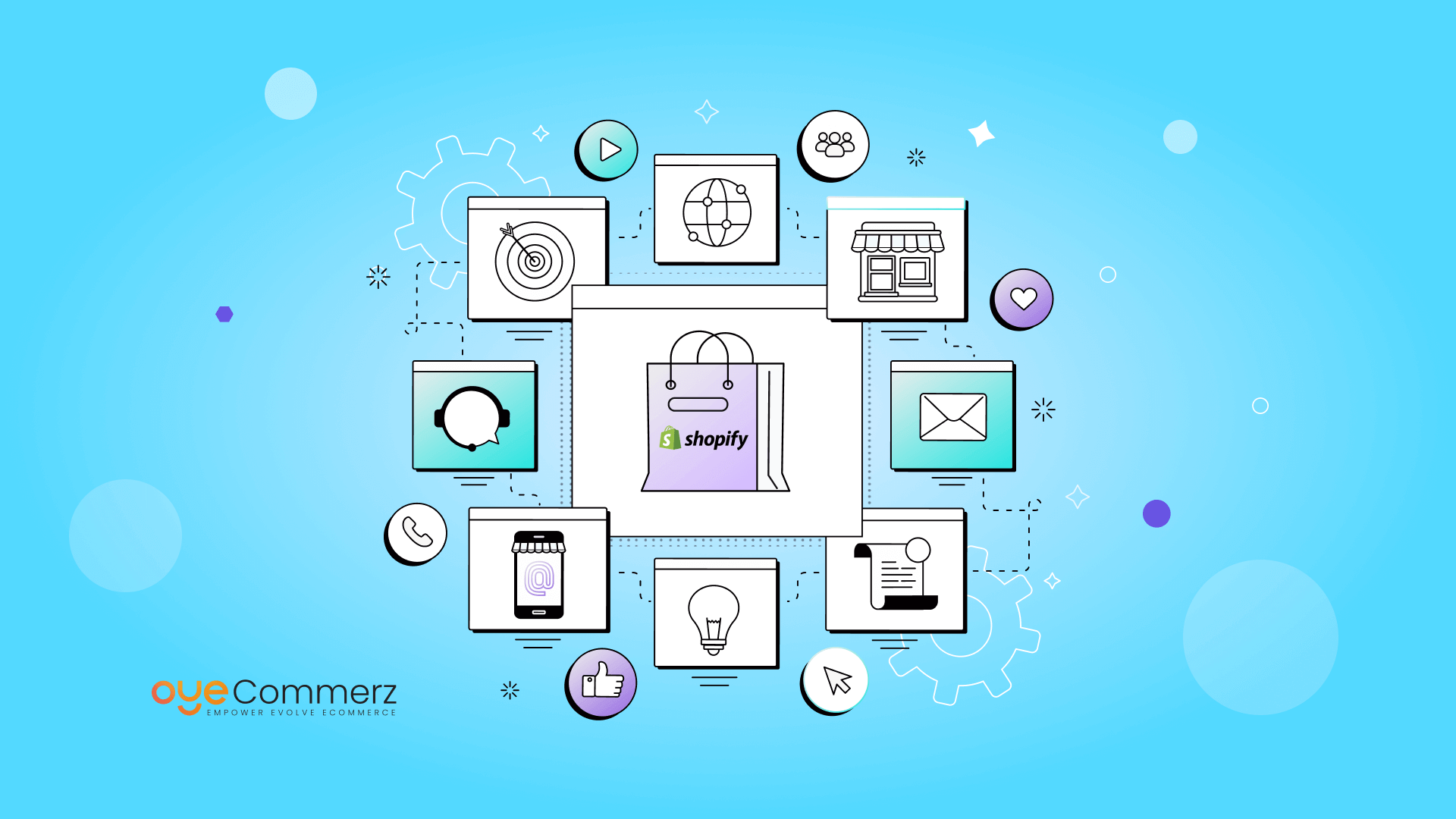
Starting Point
In this intense e-commerce environment, Shopify merchants are continually searching for ways to maximize revenue and improve their workflow. A highly effective method is through custom Shopify applications designed to meet individual business needs. Connecting with the Shopify API and using platforms like the Polaris design system, these apps enable organizations to scale efficiently while boosting customer experience. In this blog, we’ll explore important facets of Shopify app development, from visual design concerns and essential features to best practices for upkeeping and growing apps successfully.
1. Grasping Shopify API Connection
A strong grasp of Shopify’s API—both REST and GraphQL—is key for creating reliable Shopify apps. With these interfaces, developers can retrieve, change, and handle data within a Shopify store. The Graph Query Language interface offers efficient data management, facilitating speedier responses by retrieving only the required elements. Integrating the API enables programmers to customize app functionality to the company’s unique demands, offering a seamless user experience that improves business productivity and income.
2. Leveraging the Polaris framework
Shopify’s Polaris framework enables programmers to design a unified and easy-to-use experience across Shopify apps. Polaris provides a set of building blocks and guidelines that fit with Shopify’s design language, creating apps feel integrated within the Shopify interface. This approach goes beyond supports natural app navigation but also aids ensure brand consistency, an important component in building confidence with users.
3. Creating within the Shopify Marketplace
The Shopify app ecosystem is extensive, permitting app creators to develop embedded Shopify apps that function in a shop's control interface. Internal apps simplify the interface by integrating directly within Shopify’s platform, cutting down on the requirement for separate logins or additional navigation. For creators, using Node.js for backend processes and React.js for the front end has grown into a preferred choice, as these technologies allow growth-ready, adaptive applications that deliver an optimal interface.
4. Essential Features for Shopify Applications
A successful Shopify application requires capabilities that address critical issues in the e-commerce journey. Webhooks for immediate alerts, bespoke design customization options, and cross-channel commerce options are vital aspects that can improve store management and user interactions. By integrating these functions, Shopify apps don’t just simplify in-house tasks but also boost the overall customer experience.
5. Best Practices for App Development
When developing Shopify apps, it’s crucial to follow industry best practices. Upkeep methods such as regular updates, client help, and safety measures are necessary for maintaining customer loyalty. Online visibility strategies for Shopify applications can also be used to increase app exposure and downloads. User retention strategies, such as push notifications and loyalty programs, are key for keeping customers and building a dedicated following.
6. Scaling Shopify Applications for Future Demand
As Shopify stores expand, expanding app capabilities becomes vital to handle higher user loads and feature requests. Adopting serverless architecture and emphasizing efficient data handling through Graph Query Language can support apps grow without performance issues. It’s equally important to have a plan for scaling the app’s backend systems to handle increased demand, including a checklist for selecting a app builder with expertise in Shopify applications.
7. Examining the Expense of Building Shopify Apps
Building custom Shopify apps can range broadly in investment depending on the features, linkages, and personalization necessary. Essential functions like API integrations, user interaction elements, and online reach options can increase expenses. However, the profit potential is often worthwhile, as these apps can significantly improve revenue and optimize store operations.
8. App Maintenance Strategies
Sustaining application performance is equally necessary as developing it. Regular updates to multi-channel sales apps fix issues, improve security, and keep alignment with the current Shopify framework are important. Planned support measures also include user assistance and function upgrades that match evolving e-commerce trends.
9. Resources for Developing Shopify Apps
Shopify offers multiple options to ease the development process, from coding environments like Node.js and React to Webhooks for real-time updates. Tools like Shopify’s CLI simplify the app creation path, while Shopify App Bridge enables embedded apps to connect easily with Shopify’s control panel. These options are essential for developing solutions that are both functional and user-friendly.
10. Emerging Trends in Shopify App Development
The outlook of Shopify app creation is exciting, with new directions moving towards artificial intelligence capabilities, improved cross-channel functionality, and improved app extension options. As Shopify app best practices digital retail develops further, developers will need to stay ahead the changes to build apps that don’t just fulfill but outperform market demands.
Summary
Custom Shopify apps give a strategic method for online stores to expand with ease, increase revenue, and optimize processes. From API integration and the Polaris design system to core elements and maintenance strategies, every component of Shopify application building plays a key role in delivering a smooth interaction for users. As Shopify continues to innovate, anticipating emerging directions in software building will enable developers make the most of Shopify’s comprehensive offerings, strengthening their standing in the digital retail industry.